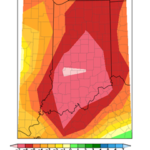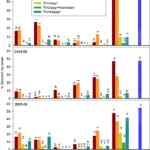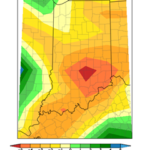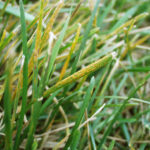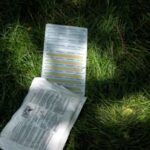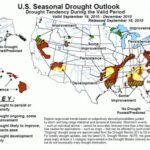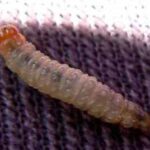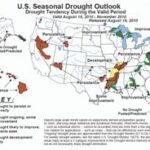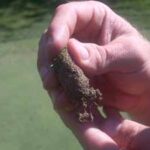Turf Tips Archives
Top Ten Turf Tips of 2010
Part II: Summer diseases in Residential Turf Part III: Summer weeds: Common summer weeds and their control Part I: Too hot: Why some turfgrass species look poor in summer Color Variation in Residential and Commercial Lawns Crabgrass Control Now is the time to seed lawns and other turf areas Choosing a Preemergence Herbicide Late Fall […]
Purdue Turf Club Apparel
Dear Supporter of the Purdue Turf Science Program, The Purdue Turf Club would like to extend our greetings and future holiday wishes to you. As we enter the end of the growing season we begin to consider the upcoming industry conferences. With these comes the opportunity for our Turf Science students to compete in the […]
Late Drought Causing Problems and Questions for Many
Earlier this fall we made recommendations on how to recuperate lawns after a drought; however, rain has not returned and now we must further adjust our maintenance practices in unirrigated turf areas. The map on the left shows the lack of rainfall in Indiana over the past 90 days. The majority of Indiana has received […]
Late Fall fertilization
Cool-season turfgrass species should be fertilized mainly in the autumn. In addition to a fertilization in September, a fertilization with nitrogen in November will help produce a healthy turf. Lawns damaged during summer months as in 2010 and newly seeded lawns may need this November fertilization to help with recovery and the establishment of new […]
Is it too late to seed? What should we do?
Recently, the question of whether or not it is too late to seed has been posed to me by many. The drought that we have experienced during our optimum seeding window has pushed back seeding dates for many. Now the question is do I seed now, do a dormant seed, or wait and seed in […]
How late is too late to control broadleaf weeds?
Due to the current drought conditions for many in Indiana we have recommended holding off on herbicide applications until rain returns to drought stressed turf. Herbicides are most effective on weeds that are not drought-stressed and herbicides can be damaging when applied to drought-stressed turf. As we continue to wait for significant rains to return […]
What should I do with all these falling leaves?
There is a myth circulating that returning mulched tree leaves can be detrimental to turfgrass quality. The research shows just the opposite. It is true that heavy layers of tree leaves shading the grass can smother and kill grass. However, our research at Purdue and other universities shows that Tree leaves (both oak and maple) […]
Why do parking lot islands of turf fail in the summertime?
Have you ever noticed that grass located in or near parking lots struggle in heat or drought conditions? In fact, many times grassed areas in or near parking lots are great indicators of when turf is getting dry, as they are normally the first to show heat or drought stress. The most common reason why […]
Dealing with Drought
Many turf professionals in central and southern Indiana are trying to figure out how best to cope with the current drought because it is affecting their normal 1) fall seeding, 2) fertilization, 3) herbicide applications and 4) cultivation. Below are some strategies on how to cope with the current situation. The maps below show illustrate […]
Rick Latin on Sabbatical Leave
Rick Latin will be on sabbatical from October 1, 2010 through March 31, 2011. He will be conducting research on turf disease management and fungicide performance with Dr. Phil Harmon at the University of Florida in Gainesville, FL. Rick will make periodic trips back to campus and will fully participate in the Expo in January. […]
Rust Diseases
Rust is a disease of taller mown turf. Outbreaks are most common on residential lawns, low budget athletic fields, and, occasionally, on golf course roughs. A variety of related fungi cause rust. Ccommon names include leaf rust, crown rust, and stem rust, and the disease occurs almost exclusively on Kentucky bluegrass and perennial ryegrass. Rust […]
Fall Time Mole Control
Moles are back in the limelight!. These small subterranean, tunnel-making pests are causing big frustrations for those managing turfgrass and landscapes. Mole damage is most common during the spring and fall. The only two methods of effectively controlling moles are to; (1) use a bait that they are attracted to OR (2) to physically remove […]
Record drought and heat are making seedling establishment a serious challenge
After the extremely stressful summer conditions of 2010 many thin areas in cool-season lawns have been reseeded to restore turf density and improve appearance. Regardless of environmental conditions, establishing a turf from seed is a challenge and the process is as much art as it is science. Seedling establishment requires two steps, germination and development. […]
What to do about deteriorated lawns
This year there were multiple causes for turf decline in home lawns. High temperatures and drought were the primary causes for a decline in turf and an increase in weed incidence. During warm weather (especially temperatures > 87 °F) cool-season grasses like Kentucky bluegrass have trouble making energy while much energy is needed to maintain […]
Late Season Insects Found in Turfgrass
The following letter and pictures were sent to us for identification. There was a buzz of follow-up letters and communication afterward indicating that maybe this is not just an isolated occurrence. I have enclosed the initial letter, accompanying photographs and the return response in hopes that this is of value to others noticing the same […]
Predicting the Future and Documenting the Past
When weather patterns are not typical, as with this summer, it is useful to both look ahead and behind to help improve your maintenance practices and better time future applications. Documenting the Past One advantage to tough summers like this is they provide an opportunity to learn. Experiencing tough summers will prepare us to better […]
Fertilizer Recommendations
The amount of nitrogen fertilizer required by turf depends on various management and environmental/management factors (Table 1). A good rule to follow is to never apply more than 1.0 lb N/1000ft2 in any one application. Do not apply fertilizer more frequently than once monthly at a 1.0 lb N/1000ft2 unless you are establishing a new […]
Lawn Cultivation: Is now the time?
Lawns are cultivated (sometimes referred to as aerfication) primarily to relieve soil compaction and manage thatch (organic) layers. Other reasons may be to open the turf canopy and create a seedbed in order to facilitate interseeding or overseeding, or move certain nutrients, composts, pesticides etc. into the rootzone. Common questions regarding lawn cultivation: What are […]
Now is the time to seed lawns and other turf areas
Timing The best time to seed a lawn is in the late summer to early fall. Adequate soil moisture, warm soil, and limited weed pressure allow for excellent seedling growth. Between August 15 and September 15 is optimum seeding time in the northern half of Indiana, and September 1 to September 30 is optimum in […]
Time to make the donuts… or better yet, time to cultivate!
A shallow root system in putting green bentgrass, this plant may not tolerate deep cultivation very well Surface following solid-tine cultivation procedure, notice the rootzone mixture on the surface, the point, be careful and be gentle! A Late-Summer Cultivation Checklist: Considerations for Success: What you are trying to accomplish with this practice? Organic matter/thatch removal? […]

